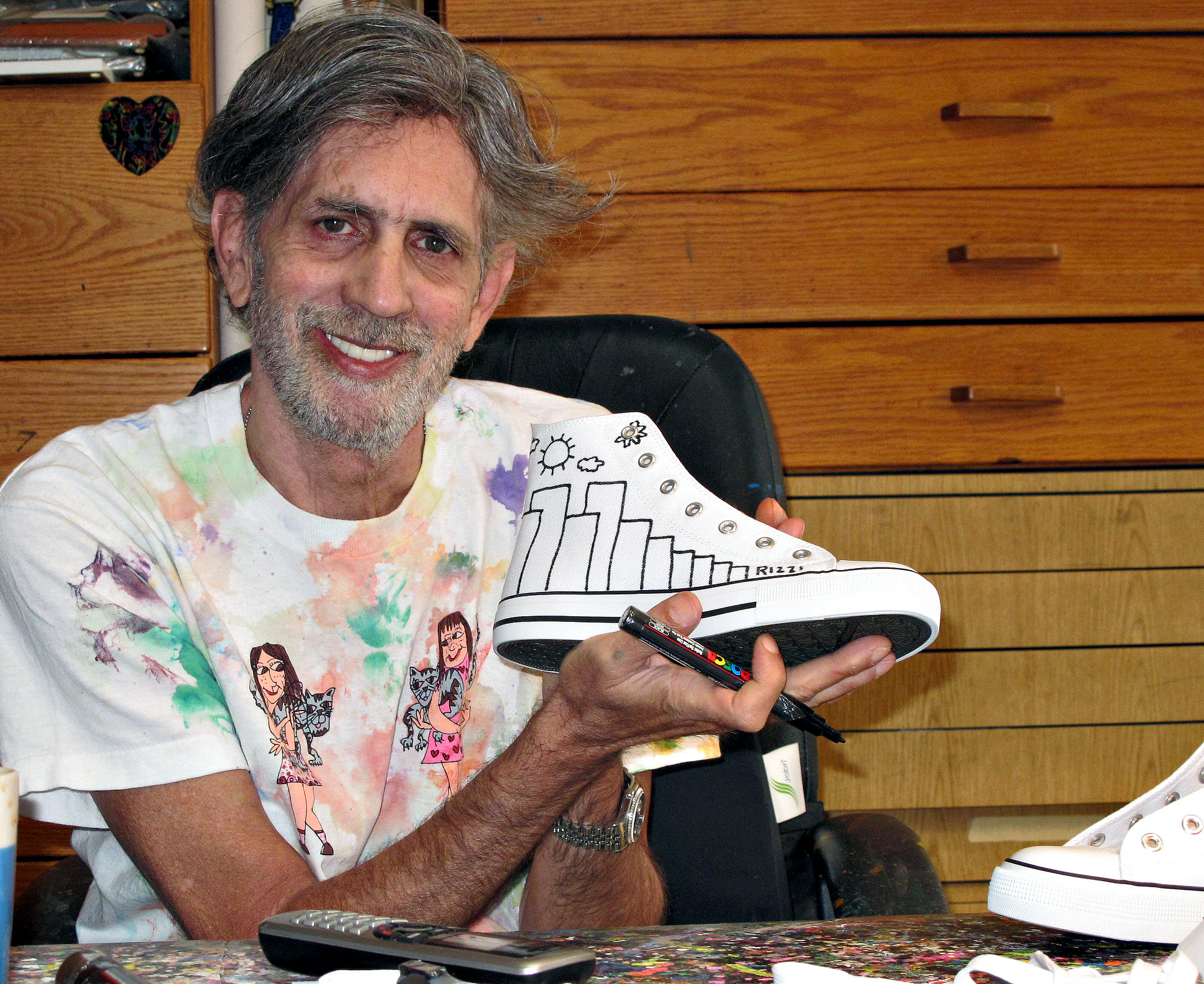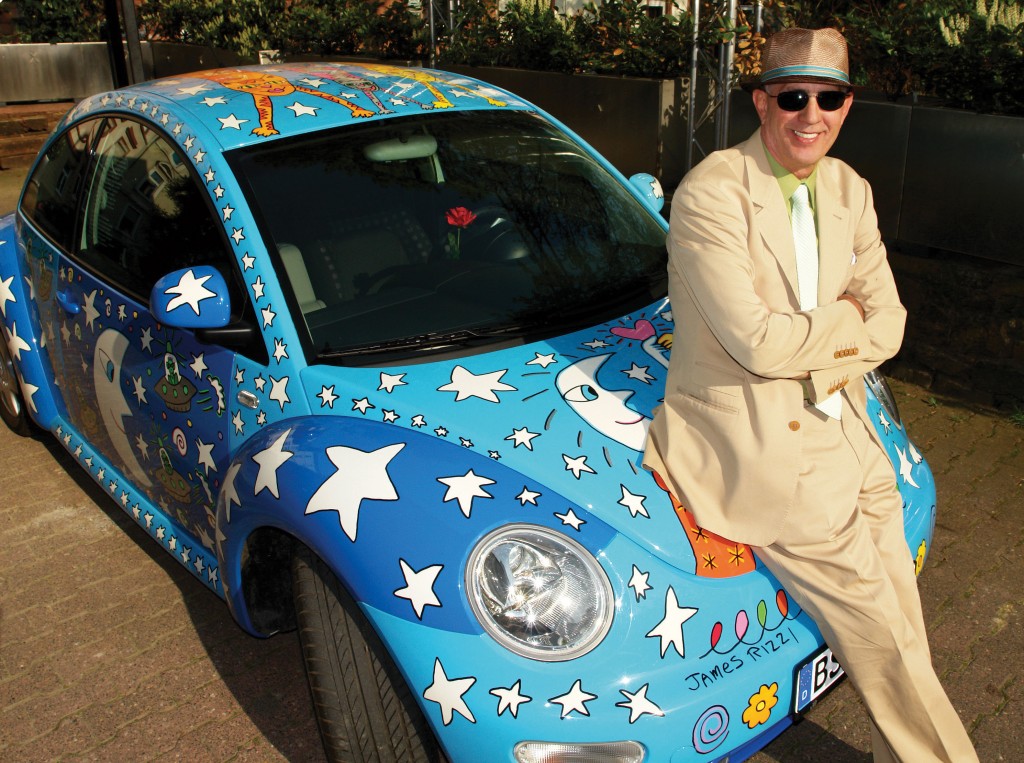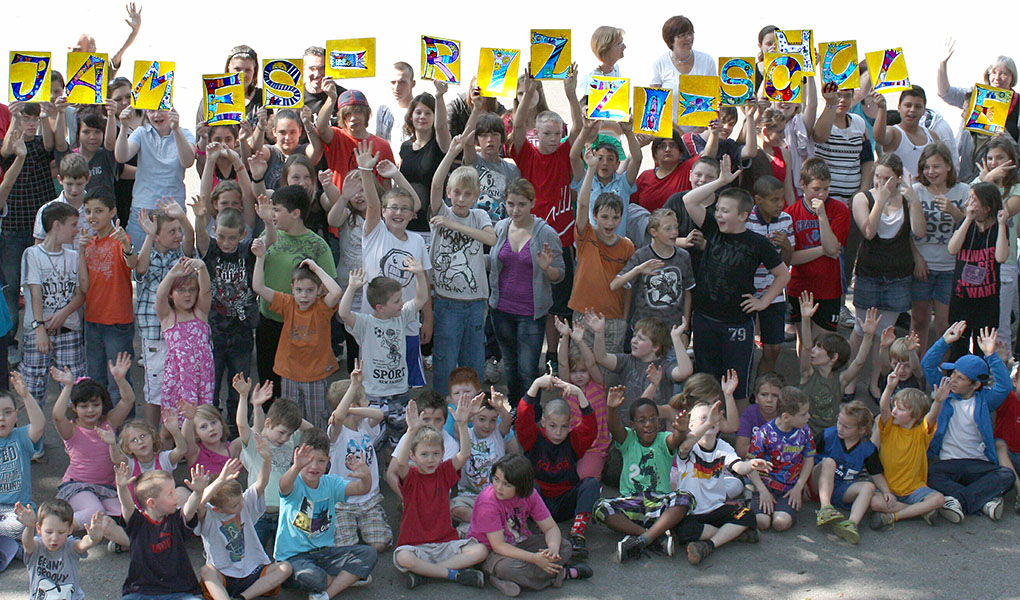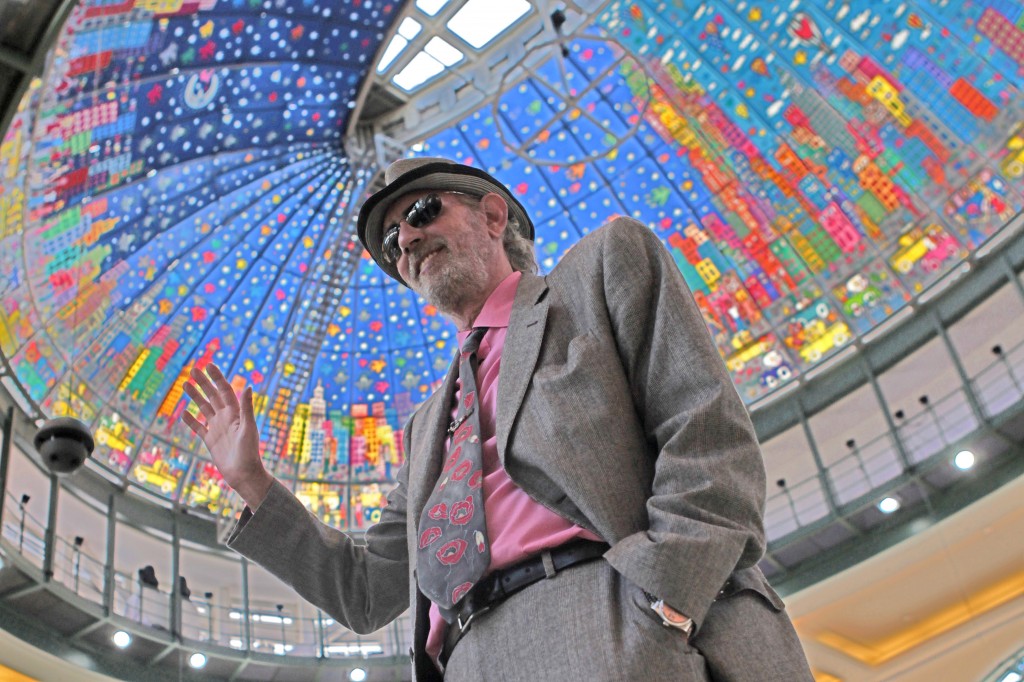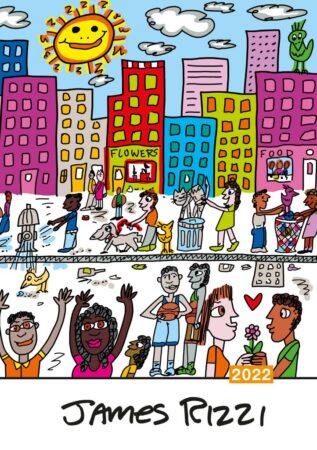- Home
- Portrait
James Rizzi portrait
The legendary pop artist from New York
Born in Brooklyn in 1950, he studied art at the University of Florida in Gainesville until 1974. Shortly after finishing his studies, he had the chance to present his work at the Brooklyn Museum in New York.
Over the years, he continued to develop his signature style, creating a sea of colorful images bursting with the joy of life. Rizzi lived and worked in his studio loft in New York’s SoHo neighborhood until his death on December 26th, 2011.
Looking at James Rizzi’s pictures, you see a lot of New York: skyscrapers and motorcades, neon signs and lollipops, hot dog vendors and the Hudson, the Guggenheim and Central Park, the Brooklyn Bridge and Broadway, streetscapes, street signs, fire hydrants, trash cans. But above all, he sees one thing: people, people, people.
‘My work is about people, about everyday life. And that is, above all, living together.’
In this context, Rizzi considers his hometown to be an exemplary social model. It goes well – and the fact that we understand each other despite countless different mother tongues is a small miracle. The secret formula?
For Rizzi, it’s mainly because one language is common to all: smiling. We also have to smile when Rizzi’s pictures open up a view of the world that wipes away everyday worries; the world is cheerful, colorful and full of little treasures that want to be discovered. The view may remind us of our childhood, a time of unrestrained curiosity. It is to Rizzi’s great credit that he has preserved this childlike nativeness.
James Rizzi became an artist quite late. He stumbled more into art, indeed, it found him at least as much as he found it. And the place of the meeting was paradoxically not New York, but Florida, the only ‘side jump’ from New York, a momentous one, however. James Rizzi was there to graduate – business studies, quite pragmatic. At least you have good career chances later on. He didn’t have much money. The house in which he lived was accordingly sparsely furnished. Yet it wasn’t quite enough for a fancy place to stay. Making a virtue of necessity, he picked up a paintbrush and painted the walls. And that’s when it started. His friends were enthralled, urging the then freshman, who was barely in his twenties, to take art as an elective after all. And at some point, business studies was forgotten, calculators made way for ink, graphs for graphics, and business studies books for pictures, pictures, pictures.
Rizzi’s art teachers encouraged him, pushed him to develop his technique, led him intellectually through art history, where Rizzi found role models in Dubuffet, Picasso, and Hundertwasser, some of whom influenced his early paintings. Through dialog, he develops his own style, absorbs tradition with inspiration, transforms it – and early on has something of his own, distinctive, simply genuine. In a triple homework, Rizzi finally invents what made him famous: three-dimensional printmaking. In 1977, this distinctive feature gave him his first breakthrough: the young artist was invited to take part in the exhibition ‘Thirty Years of American Printmaking’ at the renowned Brooklyn Museum. There hangs a Rizzi, as a single three-dimensional print construction, between the greats of the time, between Andy Warhol, Frank Stella and Roy Lichtenstein. Rizzi has arrived in the art world. And he’s back – in New York.
However, James Rizzi doesn’t move back to his home borough of Brooklyn, but to the artists’ neighborhood of SoHo, into a small retail store that he uses as equal parts studio, apartment and gallery, working day and night. When he’s not painting or handling the printing press, he sits on the street and sells his art to people passing by. “Only twenty dollars! You’ll get a real work of art for it.” Maybe the textbook knowledge of business administration hasn’t completely evaporated after all. Rizzi is a good salesman. He goes from gallery to gallery with a bundle under his arm, introducing himself, praising the paintings. The great Leo Castelli knows that the young long-haired hippie does not fit into his portfolio; but he still buys one picture from him. For his own collection. That gives a push. And that’s where it all works out. The established “Multiple Impressions Gallery” exhibits Rizzi on a trial basis – and the pictures hit like a brightly colored grenade. Several gallery owners take up the then quite weird guy; and then the sale on the street has an end. Rizzi can devote himself entirely to what he loves, to the passion that coincidence handed to him in the form of a blank wall.
James Rizzi is obsessed with work.
Today, James Rizzi can look back on a thirty-year career as an artist, which has resulted in works that are now distributed around the globe. Graphic editions, collages, acrylic paintings. Rizzi is immensely productive. I get up every morning when everyone is still asleep, start working and rarely go out,’ he confesses to those who are surprised by the sheer volume. It really got to him at the time him Florida.
There is passion behind this work. And somehow childhood again, namely parental home. For their part, James Rizzi’s parents, second-generation Catholic Irish-Italian immigrants, were always hard working, animated by the American dream. Thus, Rizzi’s philosophy is a quintessentially American blend of work ethic and ‘carpe diem’ affirmation of the present, which knows that the way up must be earned, and which always sees the reward of success as a gift. The terms “modesty”, even “humility” may fall here. Humility and gratitude – for being lucky in life. For being able to be happy.
“The past is history, tomorrow is a mystery, today is a gift.“
This is Rizzi’s doctrine of morality in compressed form. And what does the look into the mysterious tomorrow say? For Rizzi, life is an adventure. “When I wake up in the morning, I am ‘excited,’ joyfully looking forward to what the day may bring.” You never know. It may be a canvas that just won’t hold the paint, so you’re pushed to make artistic moves that suddenly turn out to be a stroke of genius; it may be that Juan Antonio Samaranch suddenly calls to ask for an Olympic Games poster; it may be that simply a drearily white wall makes you reach for a paintbrush and that grip changes a life forever
Exhibitions
26.05.2022 - 04.09.2022
12.05.2022 - 18.06.2022
10.04.2022 - 26.06.2022
17.10.2021 - 30.01.2022
04.07.2021 - 31.12.2021
04.07.2021 - 03.10.2021
Biography

The new Rizzi catalog 2022 is here!
A complete overview of all available 3D works and pigment prints of Rizzi are available from now on. The 2022 catalog is available for download here.

